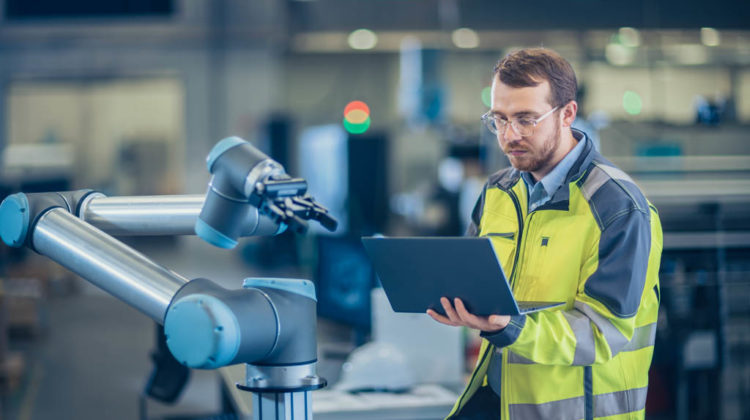
A team of researchers at the University of British Columbia has developed a system designed to improve interactions between people and robots.
‘It is incredibly important for robots in manufacturing to perform their tasks in the safest and most efficient method possible,’ said UBC doctoral student Debasita Mukherjee, who led the project. ‘In order to make these automated machines as smart as possible, we are developing systems that perceive their environments and carry out tasks in a similar manner as their human partners.’
‘Robots don’t think or feel, so they need systems that capture and analyse their environment enabling them to respond,’ said mechanical engineering professor Homayoun Najjaran. ‘Often those responses need to be in hundredths of a second to ensure the safety of humans in their vicinity.’
Human-robot collaboration (HRC) is an area of growing interest in manufacturing. In an industrial setting, HRC blends the requirements of both domains in building intelligent, mobile robots that are aware of both their surroundings and their human partner. The UBC researchers are looking at ways to assimilate autonomous systems,artificial intelligence and machine-learning technologies into HRC-focused robotics.
However, according to Mukherjee, adapting to uncertainty within an industrial setting is the biggest hurdle. Using guidelines developed to cover autonomous vehicle, she is introducing rules for functionality between humans and robots in industrial settings and testing their effectiveness.
‘Increasing automation levels is standardised and accepted by the automotive industry, but other industrial settings, while relatively static, don’t have the same standards,’ she said. ‘In the future, not only will industrial automated systems continue to use sensors to enable perception and communication similar to human capabilities, but they will also be adapting and communicating in real-time with their surroundings.’ This will involve robots being able to predict what humans and other robots will do and then respond accordingly, she added.
The researchers are now developing systems that will enable robots to function and respond outside of a prescribed environment such as a factory. ‘In an “open world”, robots will need to deal with unexpected variables such as people, structures, machines and wildlife,’ Mukherjee said. ‘We need to ensure that they can do this correctly, efficiently and safely.
The research has been published in Robotics and Computer-Integrated Manufacturing.


